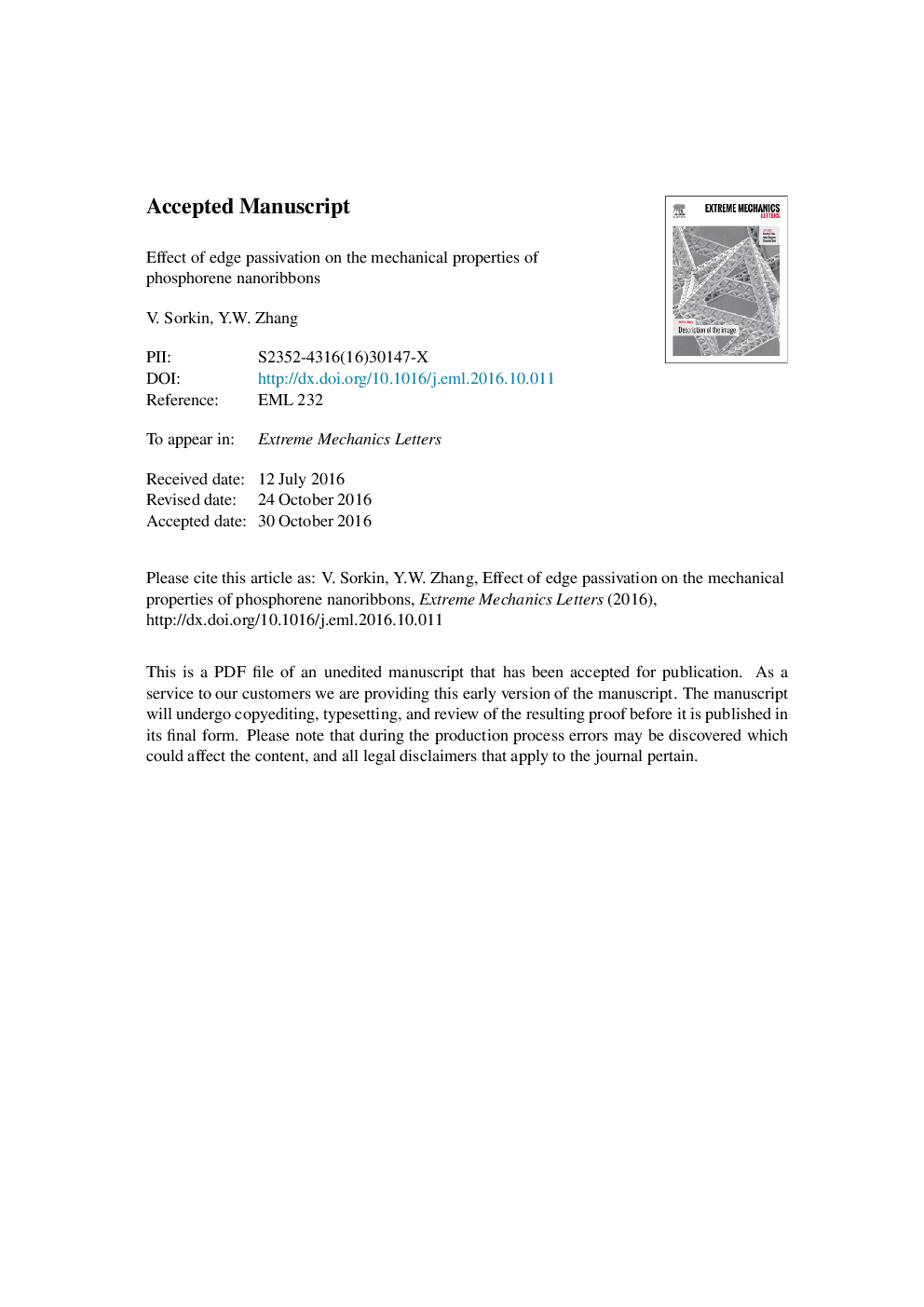| Article ID | Journal | Published Year | Pages | File Type |
|---|---|---|---|---|
| 5014429 | Extreme Mechanics Letters | 2017 | 20 Pages |
Abstract
Using density functional tight binding simulations, we studied the edge structures, edge elastic properties, deformation and failure behavior of phosphorene nanoribbons (PNRs) with edges passivated by hydrogen atoms. Two primary types of edge, that is, arm-chair (AC) and zig-zag (ZZ), were examined. It was found that edge relaxation primarily occurred within three atomic rows near the passivated edges, in the form of alteration in bond length and angle. The edge passivation was able to lessen the edge relaxation and reduce the edge stresses and elastic moduli. For AC PNRs under tension, three deformation stages were identified: linear elastic, bond rotation and bond stretching. At εâ 0.5, intra-row bonds fracture in a double-row-wise manner in the interior of the sample, leading to fragmentation of AC PNRs. For ZZ PNRs under tension, inter-row bonds are stretched directly. At εâ 0.18, a fraction of the inter-row bonds break randomly, leading to the failure of ZZ PNRs. Interestingly, the edge passivation increases both the failure strain (Îε/εâ 80%) and strength (ÎÏ/Ïâ 26%) of ZZ PNRs significantly, but the failure strain (Îε/εâ 2%) and strength (ÎÏ/Ïâ 5%) of AC PNRs only slightly.
Keywords
Related Topics
Physical Sciences and Engineering
Energy
Energy Engineering and Power Technology
Authors
V. Sorkin, Y.W. Zhang,
